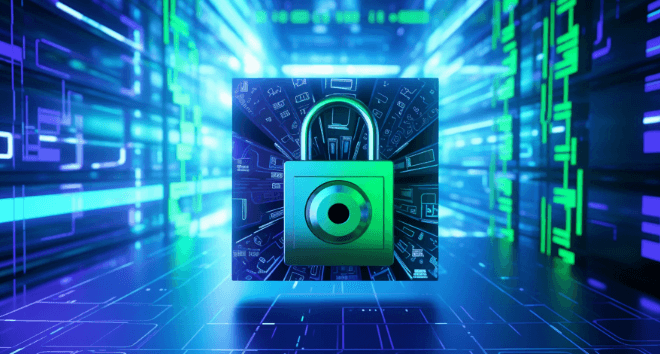Network Security in the Modern Digital Landscape

In an era where data breaches and cyber attacks make regular headlines, grasping the complexities of network security has never been more critical. Beyond the technical jargon and the ever-evolving nature of threats lies the bedrock of our ability to keep data secure and businesses thriving. The sophistication and frequency of cyber-attacks are rising, necessitating a comprehensive strategy to protect digital assets and maintain user confidence. Acknowledging the importance of this topic helps us develop a foundation for robust protection against nefarious cyber actors.
This thorough exploration will integrate insights from industry-leading sources and provide a deeper dive into how network security is the guardian of our digital frontiers. Companies must stay ahead in this digital arms race—or risk falling victim to the subsequent headline-making data breach.
Key Takeaways
- Understand the essential components and best practices of network security.
- Identify how emerging technologies and behaviors impact risk and defense.
- Grasp the implications of current security trends and future predictions.
Table of Contents
- What Is Network Security and Why Does It Matter?
- Key Components of Network Security
- Emerging Threats to Network Security
- Impact of IoT and BYOD on Network Security
- The Role of Artificial Intelligence in Network Security
- Best Practices for Enhancing Network Security
- Understanding Encryption in Network Security
- The Human Factor: Training and Awareness
- Regulatory Compliance and Network Security
- Future of Network Security
What Is Network Security and Why Does It Matter?
Network security is a term that covers the tools, policies, and procedures designed to protect data and manage traffic over a network. With the scope of cyber threats ranging from data theft to crippling ransomware, the measures taken to defend against such attacks are critically important. The issue carries such weight that it ensures business continuity and is interwoven with national security interests. Without secure networks, there’s a risk that personal information could fall into the wrong hands, businesses could experience significant downtime, and government entities could be rendered unable to operate effectively. Thus, implementing stringent network security protocols is not just good practice; it’s mandatory for the safekeeping of digital society.
Key Components of Network Security
Security devices, known as sophisticated and software-based firewalls, regulate and monitor all incoming and outgoing network traffic in line with the company’s previously established security requirements. By filtering traffic and blocking untrusted sources, firewalls act as the primary line of defense, determining which traffic is safe and which poses a potential security threat. They serve as a line of defense between trustworthy external networks like the Internet and safe, controlled internal networks within the network administrator’s jurisdiction.
Intrusion Prevention Systems (IPS)
Systems for preventing intrusions are used to identify and stop such problems before they start. By actively performing real-time network threat prevention, IPS can identify fast-spreading threats, such as zero-day or brute-force attacks, and take immediate action. Effective IPS services are equipped with comprehensive databases of known vulnerabilities and use this information to identify patterns or signatures that might indicate malicious activity within network traffic.
Virtual Private Networks (VPNs)
Through virtual private networks or VPNs, users may transmit and receive data via public or shared networks as if their computer equipment were directly linked to the private network. These secure connections are essential for maintaining privacy as they encrypt data at the sending end and decrypt it at the receiving end. VPNs usually require remote network users to be authenticated and use encryption techniques to prevent the disclosure of private information to unauthorized parties.
Emerging Threats to Network Security
The landscape of cyber threats is a continuously changing battlefield. Attackers are using more sophisticated methods, and the vectors of attacks are diversifying. New malware variants, cyber espionage, and advanced phishing methods are just some of the trends that experts have observed as having a rising prevalence. A notable mention in recent threat reports is the evolution of ransomware into more targeted, sophisticated, and costly attacks, affecting all institutions, from city governments to major corporations. As professionals work round the clock to identify and defend against these threats, attackers are equally busy finding ways to outsmart these systems, often exploiting human vulnerabilities rather than technological ones.
Impact of IoT and BYOD on Network Security
The Internet of Things has expanded rapidly, with many devices connected to the web and each other. While convenient and efficient, this connectivity comes with heightened security risks, as each device becomes a potential entry point for cyber attacks. Personal devices used in the workplace, known as Bring Your Device (BYOD), can add complexity to network security. They require proper security protocols, such as secure mobile access protection and robust wireless security measures, to prevent exploitation through less secure personal devices brought into company ecosystems.
The Role of AI in Network Security
Artificial Intelligence (AI) contributes to network security by enhancing threat detection and response with advanced analytical capabilities. AI algorithms can ingest vast data and identify trends that may elude human analysts. These systems can also detect anomalies pointing to novel or sophisticated cyber threats. AI is not just a tool in our arsenal against attackers; it represents a fundamental shift in how security infrastructures can preemptively address vulnerabilities before they’re exploited.
Best Practices for Enhancing Network Security
While there is no one-size-fits-all strategy for network security, certain best practices are universally recommended. These include implementing a layered security approach (“defense in depth”), conducting regular vulnerability assessments and penetration testing, maintaining up-to-date security patches, and enforcing strict user permissions. Resilient security postures also need staff training to identify and report phishing attempts, prudent software and hardware asset management, and the creation of incident response plans.
Understanding Encryption in Network Security
Encryption translates data into a code to prevent unauthorized access, a critical component of network security. Depending on the needs of an organization, different types of encryption can be applied, such as end-to-end encryption for messages and full-disk encryption for storage devices. As data moves across networks and devices, adequately implemented encryption acts as a fail-safe, ensuring that intercepted data remains protected from adversarial decryption efforts.
The Human Factor: Training and Awareness
Technology alone does not encompass the entirety of network security. The human factor plays a pivotal role, with social engineering attacks often serving as the precipice for some of the most significant data breaches. As such, training programs dedicated to increasing cyber threat awareness are crucial in fortifying the human element of cybersecurity. Educating staff to identify potential red flags in emails, attachments, and behavior online can supplement technical safeguards and create a culture of security awareness within an organization.
Regulatory Compliance and Network Security
Adherence to regulatory requirements is a crucial facet of network security. Laws and regulations such as the General Data Protection Regulation (GDPR) in the European Union and the Health Insurance Portability and Accountability Act (HIPAA) in the United States set standards for data protection and guide organizational policies. Non-compliance can result in significant fines and damages, reinforcing the need for businesses to stay up-to-date with the latest regulatory demands and integrate compliance into their security strategies.
Read also Unleash Your Inner Productivity Ninja with Drag-and-Drop Hacks on Mac
Future of Network Security
The network security landscape is expected to face increasingly complex challenges. The development of quantum-resistant encryption techniques is becoming increasingly crucial with the introduction of quantum computing and its possible effects on encryption. The rollout of 5G technology is likely to amplify the speed and sophistication of network connectivity, which, while beneficial for communication and business, also introduces additional security considerations. Preparing for these emerging technologies will be imperative in shaping the trajectory of effective network security strategies.
In order to achieve a well-rounded understanding of network security, insights from authoritative discussions are instrumental.




